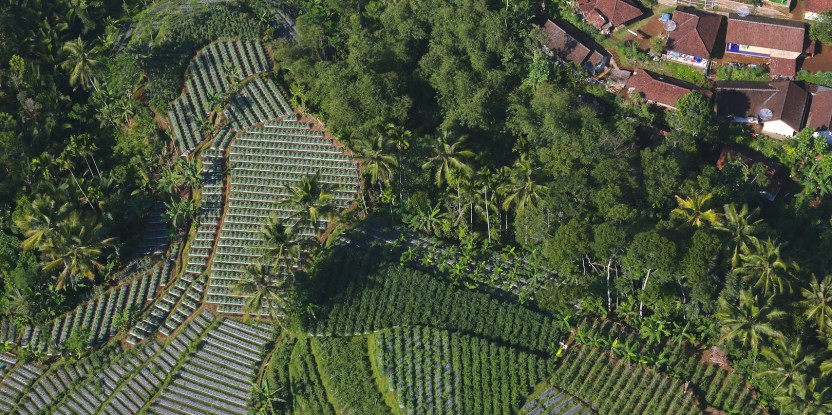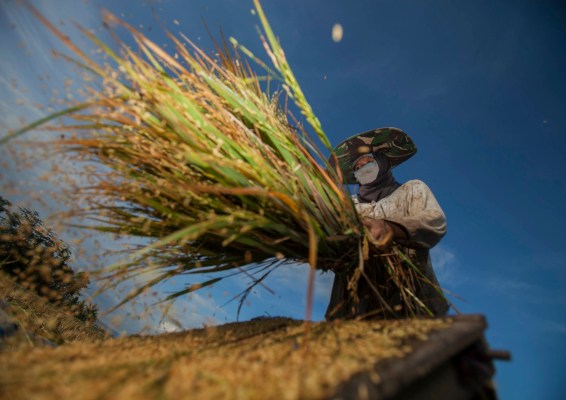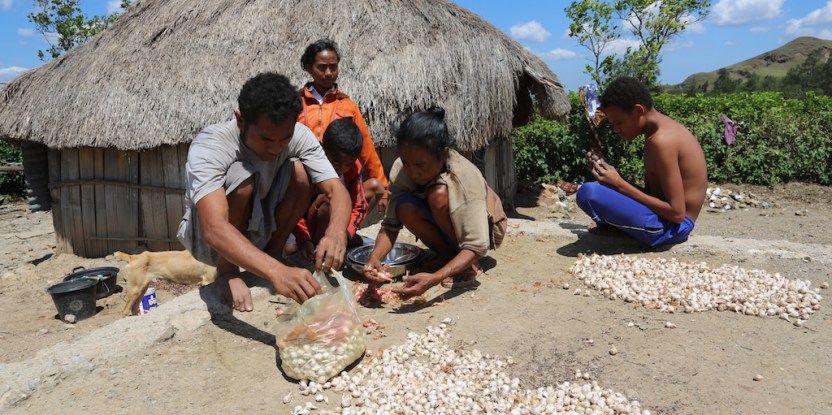As we embark on a new year in 2017, what critical social and environmental issues are we facing?
For one, some 800 million people still go to bed hungry every night – mostly in developing countries. Meanwhile, greenhouse gas emissions continue to rise. When it comes to global poverty, nearly 900 million people survive on less than $1.90 USD per day. What’s more, our natural habitat is disappearing at an alarming rate due mainly to agricultural expansion in what has been termed the ‘sixth mass extinction’.
But it’s not all a doomsday scenario. While significant challenges still persist, progress has also been made. For instance, the United Nations estimates that since 1990, more than one billion people have been lifted out of poverty. Additionally, the number of undernourished people has been halved.
IN IT FOR THE LONG HAUL
So how do we ensure that those most in need attain food security while we protect our environment from the ravages of climate change?
Landscape approaches seek to provide tools and concepts on how to best manage land in order to achieve a balance between social, economic and environmental goals. They are also seen as the way to achieve the Aichi targets of the UN Convention on Biological Diversity that aim to develop national strategies in 193 countries for the conservation and sustainable use of biological diversity.
Experts from the Center for International Forestry Research (CIFOR), along with partner institutions, examined how landscape approaches can help overcome major challenges in a new study. What they found was a major gap in the way these approaches have been implemented.
“Landscape approaches should be long-term commitments implemented across broad scales (processes, not projects) and this contradicts the current models of policy, research, and donor funding,” said James Reed, a landscape and food system researcher at CIFOR.
Reed says that overlaps between landscape approach philosophies, the Aichi targets, and the Sustainable Development Goals (SDGs) should, in theory, provide a convincing case for donors, policymakers, and researchers to commit to well-funded and well-designed long-term, large-scale landscape initiatives.
STAYING ON TRACK
Since we are talking about vast landscapes that range from remote frozen tundras to arid deserts and tropical forests – how do we ensure that what we do works?
The study stressed the need for more research on better monitoring and data collection to ensure targets are being met, and to provide a strong evidence base to track the effectiveness of various landscape approaches. This includes a well thought out ‘Theory of Change’ which includes planning, participation and evaluation components.
“A fully considered landscape approach must be underpinned by the rigorous development of a ‘Theory of Change’ model supported by metrics to measure progress along impact pathways,” said Reed.
Researchers also found that if agencies are unable to provide the required investments to measure their effectiveness, they should recognize that what they are doing cannot be accurately described as a landscape approach.
One way to make sure a specific landscape approach is working is to integrate ‘citizen science‘. By engaging the community in scientific research, we can more effectively monitor how well these landscape approaches are working and identify any major challenges.
“In order to develop long-term commitment beyond the duration of project funding, initiatives need to be locally embedded, enhance local capacity, and encourage empowerment of previously marginalized groups. Done effectively, participatory monitoring offers a way to engage local stakeholders and enable them to evaluate progress towards goals that they themselves helped to establish,” said Reed.
THE BIG PICTURE
However, it is vital that everyone involved in the landscape approach is fully onboard. Reed says one of the major challenges is making sure there is greater political will and that all stakeholders are fully engaged. He says that everyone involved needs to have a clear outline and know what the expectations are. He also stresses the need for all stakeholders to take a flexible approach that works on the ground.
“It is important not to try to promote prescriptive approaches and instead understand that the specific situation within the landscape will often best dictate which strategies are likely to be more effective,” said Reed.
The study shows that it is vital that any implementing agency also looks for ways to provide incentives while providing alternative livelihood strategies for vulnerable groups. Looking at how donor agencies and programs are developed, research indicates that there is a real need to break down sectorial barriers across policy, research and practice.
“Often, sector-specific aims will contradict and negatively impact the objectives of other sectors within the landscape. A more holistic approach will attempt to identify where synergies and trade-offs occur within the landscape and act upon those accordingly,” said Reed.
JUST DO IT
To find ways to improve human well-being while at the same time maintaining and restoring the natural resource base upon which future societies will depend on is not an easy task. But that shouldn’t hinder actors from taking the first step.
“We don’t really need a checklist for success, just working towards these goals will be sufficient to make a start. We need to acknowledge the complexity and have an understanding that there is no blueprint for landscape approaches,” said Reed.
“It will often be a case of muddling through, using trial and error approaches, learning from mistakes, adapting governance over time and, with that, we can move forward” he added.
We want you to share Forests News content, which is licensed under Creative Commons Attribution-NonCommercial-ShareAlike 4.0 International (CC BY-NC-SA 4.0). This means you are free to redistribute our material for non-commercial purposes. All we ask is that you give Forests News appropriate credit and link to the original Forests News content, indicate if changes were made, and distribute your contributions under the same Creative Commons license. You must notify Forests News if you repost, reprint or reuse our materials by contacting forestsnews@cifor-icraf.org.


